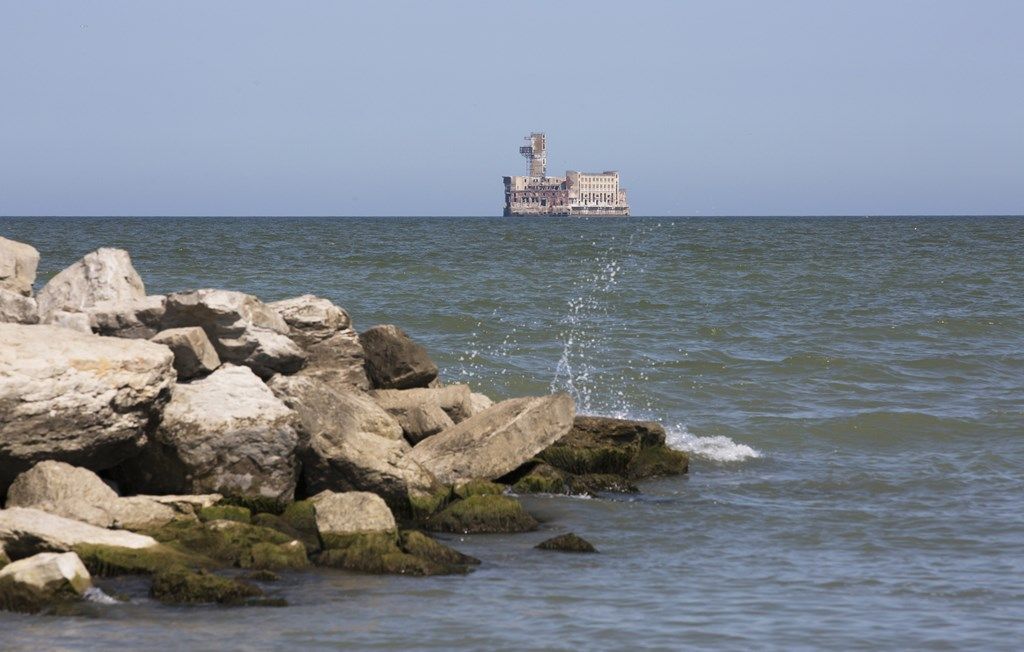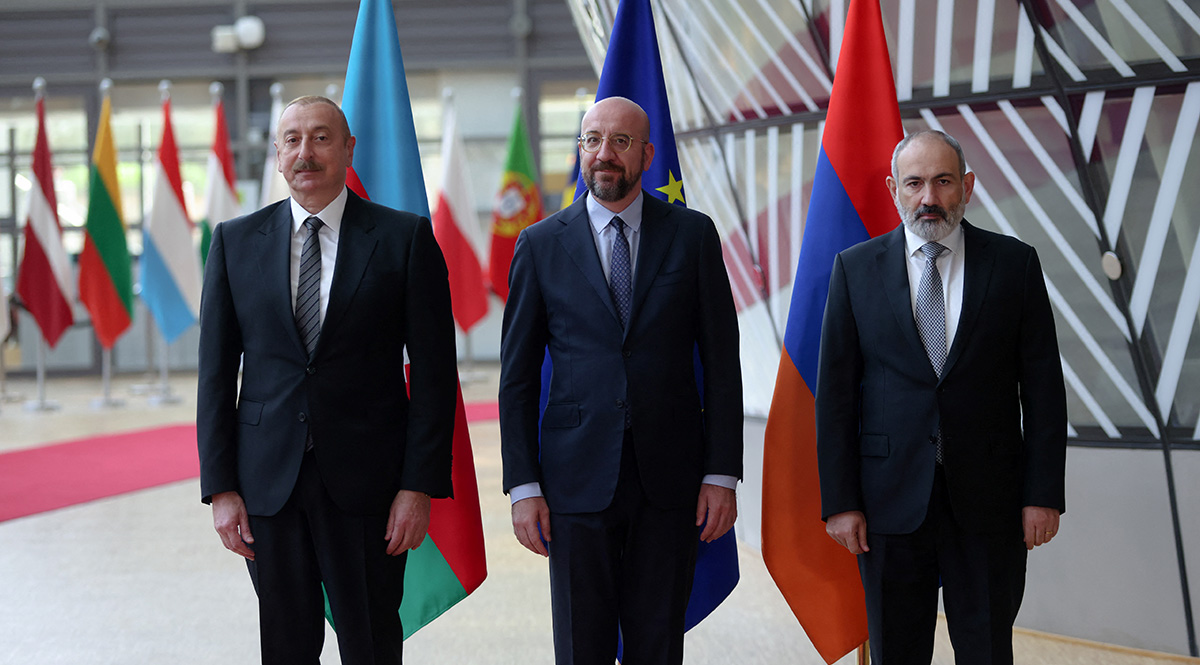Georgia's Anaklia Deep Sea Port Project May Open New Routes, but at What Cost?
The construction of the Anaklia deep sea port will be the largest infrastructure investment in Georgia’s history. It is expected to contribute to the development of the Middle Corridor, a transport route connecting China with Europe. The selection of a Chinese company as the port’s contractor indicates China’s growing role in the South Caucasus and is another sign of Georgia distancing itself from the West. However, the investment has the potential to diversify transport routes and increase economic cooperation between the EU and the Caucasus and Central Asia.
(1).png) Tymon Pastucha
Tymon Pastucha
The Trans-Caspian International Transport Route (the so-called Middle Corridor) project being developed by China in the Central Asian states and South Caucasus involves diversifying transport routes from China to the EU outside of Russia and bypassing the risky Red Sea route. A vital part is the planned Anaklia deep sea port, which would be the second-largest Black Sea port capable of handling the biggest post-Panamax class vessels (draughts of more than 13m). China’s involvement in this investment challenges the EU’s and NATO’s position in the Black Sea basin.
Evolution of the Investment Concept
The plans for constructing the port of Anaklia were presented in the 1970s by the USSR authorities and later by Georgian presidents Eduard Shevardnadze (1992-2003) and Mikheil Saakashvili (2004-2013). It was planned to be a regional hub and economic centre for western Georgia, handling cargo from Central Asia, the Caucasus, and Russia. However, it was not until 2016 that the government of the Georgian Dream (GD) started the investment, selecting a Georgian-American consortium (TBC bank from Georgia and Conti Group from the U.S.) as the contractor. The port was supposed to be ready in December 2020, but in 2019 the Georgian prosecutor’s office accused the owners of TBC Bank of money laundering. At the same time, the authorities accused the consortium of failing to meet contractual deadlines and failing to secure financing. They finally terminated the contract with it in January 2020.
The GD government revisited the project in early 2022 and, on 29 May this year, selected a Chinese-Singapore consortium led by the China Communication Construction Company (CCCC) to build the port. Contract negotiations are currently underway. GD portrays the project as making the country economically and transport-independent from Russia and strengthening its security. Still, the Georgian opposition sees the ruling party’s decision as political, resulting from corruption. According to the authorities, the choice of the current contractor is also to be supported by the lack of risk of possible disruption to the port by Russia.
CCCC has already implemented several infrastructure projects in Georgia, including constructing the East-West Highway. However, its work was characterised by delays, poor workmanship, labour rights violations, and much higher costs than expected. The U.S. and the World Bank have sanctioned CCCC for similar practices in other countries (e.g., Bangladesh and the Philippines), including corruption.
Project Assumptions and Economic Challenges
The project will be executed as a public-private partnership under the Build-Own-Operate (BOO) model, which takes the logistical, financial, and technical burdens off the contracting state but promotes reduced transparency in the investment process. The Georgian government will have a 51% stake and formal control. The investment is to take place in several phases. Within three years, a harbour capable of handling 7 million tonnes of goods per year (currently, Georgian ports handle around 1 million tonnes) is to be completed for around $600 million. The target capacity of the port is 100 million tonnes a year, and the estimated investment cost is more than $2 billion. This does not take into account the necessary accompanying works, such as road expansion and railway modernisation.
Given the BOO model adopted, the financing of the project and its prospects for profitability are not transparent. It is to be financed by Chinese entities, but the details of the contract being negotiated are not public. This raises the risk of state guarantees in which, in the event of a default on the debt (resulting, for example, from low transhipment, low income), the lenders can foreclose on property unrelated to the investment. In the case of Chinese lenders, such guarantees often cascade to include the seizure of various state assets, such as land, pension funds, or gold reserves (e.g., Montenegro and Sri Lanka cases). Meanwhile, challenges to Anaklia’s viability include the uncertainty of planned trade flows within the Middle Corridor (due to alternatives), difficulties related to the development of the route in other countries and competition from Turkey, whose attractiveness may increase once the so-called Zangezur transport corridor is established.
The International Dimension
The construction of the port is part of the implementation of the China-Georgia Strategic Partnership Agreement. China sees benefits in it and the future management of the investment. From their perspective, the port will become a key part of the Middle Corridor, shortening and diversifying transport routes to the EU. It will also strengthen China’s investment involvement in the region and facilitate access to the Black Sea. In parallel, China has expressed its readiness to offer Georgia preferential loans for social and infrastructure projects, hoping to deepen the country’s dependence on it.
The Anaklia port project had been opposed by Russia for years, which argues that the investment would compete with its Black Sea ports in Novorossiysk, among others, and that U.S. involvement in the project would weaken its economic influence in the Caucasus. The port’s location was also said to pose a geostrategic threat due to the possibility of hosting NATO ships near Abkhazia, where a Russian military base is located and a naval base is planned. However, once Chinese entities became involved in the project, the Russian side stopped raising objections. This is due to the peculiarities of Sino-Russian relations, the Georgian authorities’ anti-Western course, and the chance to use the port to import Western goods to Russia, bypassing Western sanctions.
The EU and the U.S. supported the original concept of the port, seeing it as an opportunity to diversify trade routes, facilitate access to new markets, and improve energy security through greater opportunities to import rare earths, uranium, or hydrocarbons. They pointed out that cooperation with Western entities would lower Georgia’s dependence on Russia and strengthen the economic ties linking it to the EU. Now, the U.S. authorities and the Georgian opposition warn that the selection of a Chinese entity will deepen Chinese influence in Georgia through control of crucial infrastructure. They warn that a lack of transparency in the consortium’s selection and secrecy in the details of the contract could lead to corrupt practices and Georgia’s financial dependence on China, consequently hindering its integration into Western structures.
The project is important for the economies and infrastructure development in the South Caucasus and Central Asian countries. Azerbaijan expresses its readiness for financial and technical involvement by planning to use the port to increase economic exchange with the EU and Ukraine (in the long term) and diversify energy export routes. Kazakhstan and Uzbekistan also declare their support, seeing it as an opportunity to facilitate access to the European market.
Conclusions and Perspectives
The award of the Anaklia port construction contract to a Chinese entity confirms China’s desire to control Georgia’s transport infrastructure. It may affect the latter’s financial and political dependence on China and deepen its isolation from the West. This also will not bring about the development of local entrepreneurship, technology transfer, or reduce unemployment because the benefits will be transferred to China, according to the investment model adopted and in the context of the CCCC’s activities. At the same time, the project fits with China’s policy of gaining control over maritime infrastructure in Europe, which may pose a strategic challenge to the logistical independence and economic and military security of the EU and NATO.
The realisation of the investment, even by Chinese entities, may bring certain economic benefits to the EU and Poland, as it will facilitate access to new markets and diversify transport routes. These results, however, depend on the project being carried out in accordance with international standards, which, with the GD’s current policy and a Chinese partner, may be difficult. The financial involvement of the EU and European companies should, therefore, depend on the direction of the Georgian government’s foreign policy after the autumn elections. A possible victory by the opposition will result in a change in foreign policy course. It may lead to the termination of the contract with the Chinese partner and attempts to replace it with Western investors. To exploit the project’s full potential, it would be advisable to expand the rail and road infrastructure connecting Poland with Bulgaria, Romania, and possibly the Ukrainian coast after the war with Russia is over.


.png)



.png)